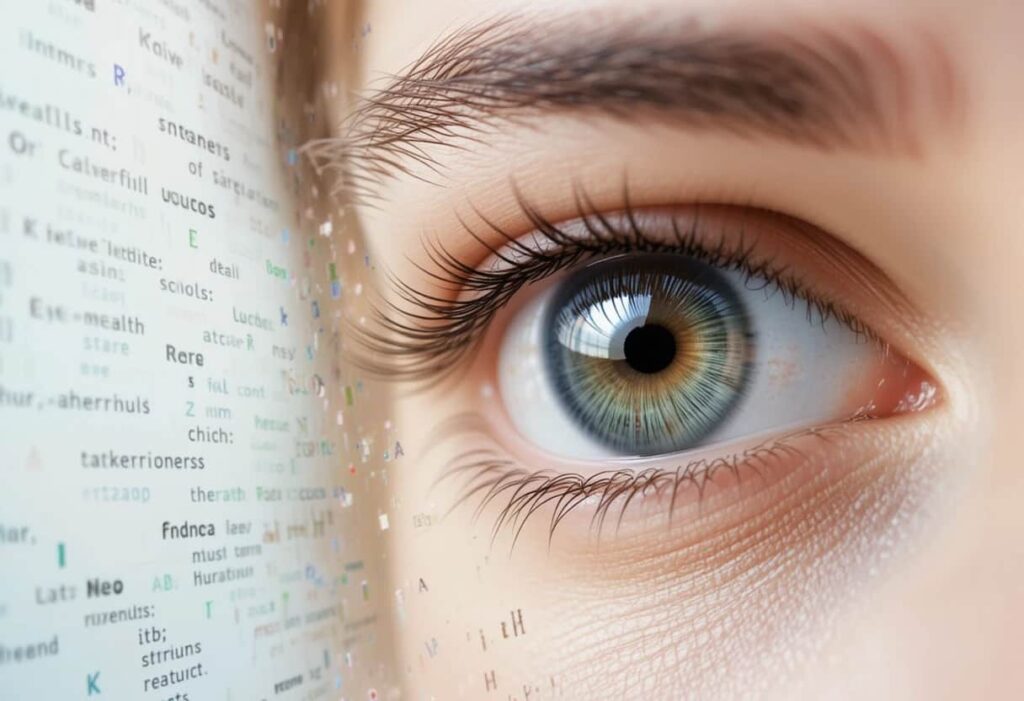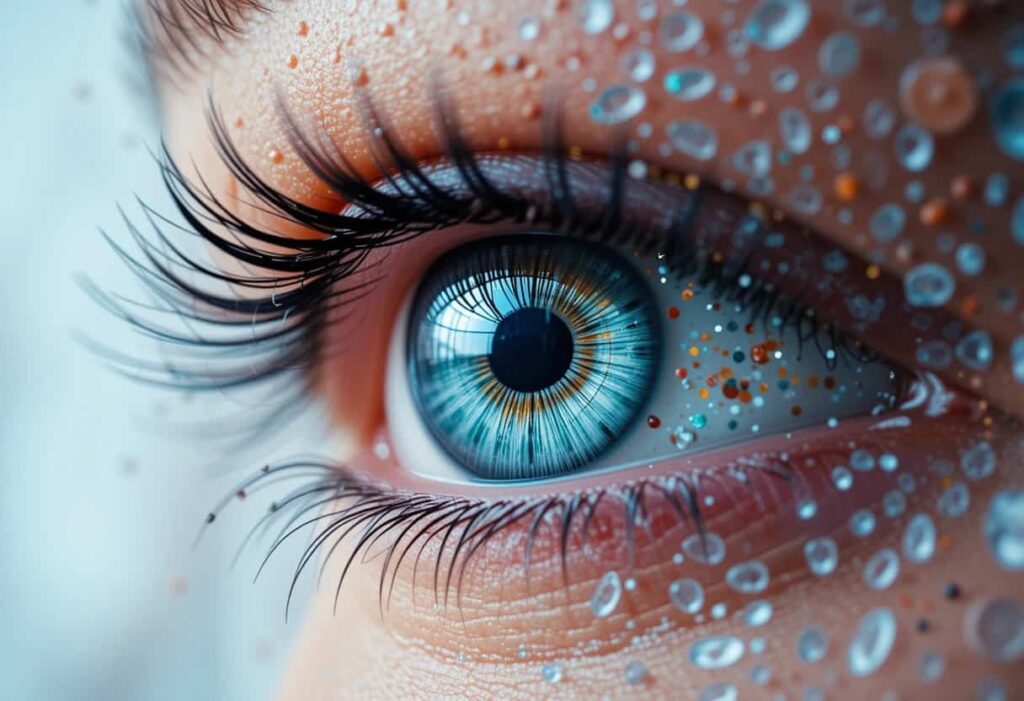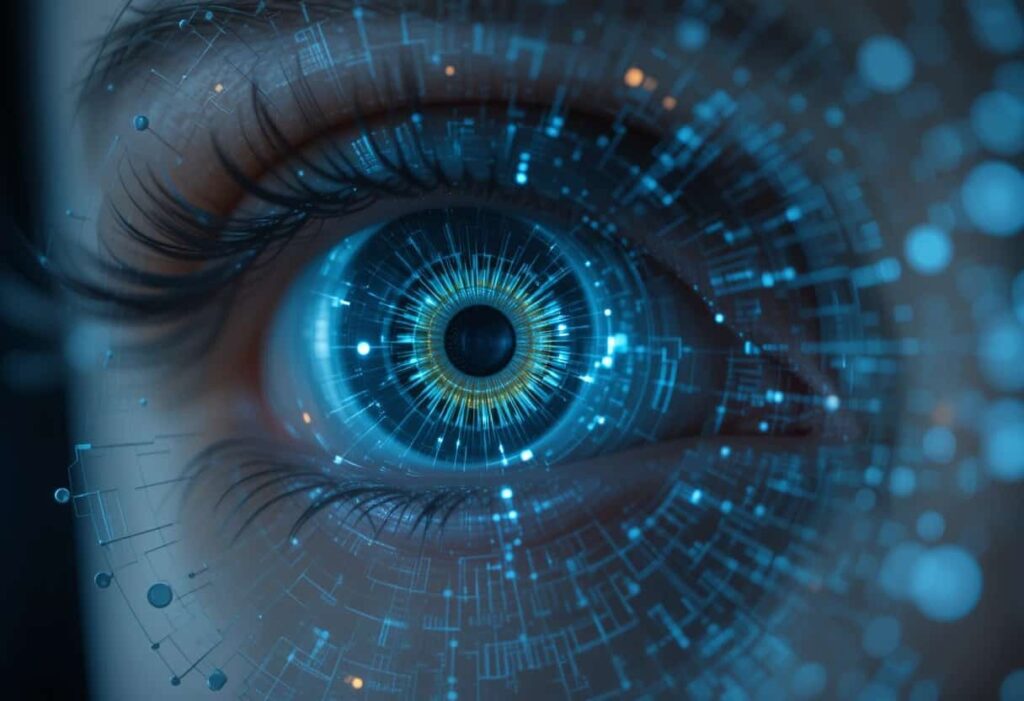Generate Daily Eye Health Myths In Json Format – Easy, Fast & Reliable!
Maintaining good eye health has become a growing concern in our fast-paced digital world. People are increasingly exposed to screen time, artificial lighting, and lifestyle habits that affect their vision. At the same time, a large number of myths about eye care continue to circulate. These misconceptions often confuse people and prevent them from making informed decisions about their eye health.
To counter this growing wave of misinformation, many developers, content creators, and healthcare professionals are now using data formats like JSON (JavaScript Object Notation) to organize and deliver reliable eye health facts daily. When we generate daily eye health myths in JSON format, we create structured, reusable data that can be easily integrated into websites, mobile apps, digital newsletters, and healthcare chatbots.
In this article, we’ll explore how this strategy works, what myths are commonly spread, how to build an efficient system using JSON, and how this approach benefits health communication in the digital era.
Why It’s Important to Debunk Eye Health Myths Daily?
Eye health myths aren’t just harmless stories. They can lead people to avoid treatments, ignore warning signs, or use remedies that don’t work. Regularly sharing correct information helps build awareness and protect vision health. Doing this in a digital, automated way can ensure consistency and reach a wider audience.
From the idea that carrots give you night vision to the belief that glasses weaken your eyesight, many of these myths have been around for decades. But science tells a different story. Generating and delivering accurate facts in a structured format like JSON can bring clarity to users across all platforms.
How JSON Simplifies the Delivery of Daily Eye Health Myths?
In today’s fast-paced digital environment, health information needs to be clear, structured, and easily distributed. JSON (JavaScript Object Notation) offers a smart solution for this. It’s a lightweight and widely used data format that allows smooth communication between systems, particularly between servers and clients in web or app environments.

When used in healthcare education, especially for delivering daily eye health myths and facts, JSON helps create a structured content model. This makes it easier to automate content delivery across platforms like mobile health apps, chatbots, email campaigns, and digital displays.JSON’s format is both machine-readable and human-friendly, which ensures accuracy and consistency in information sharing.
Key Components of Eye Health JSON Content:
| Component | Description |
| date | The date when the myth is shared |
| category | The type of myth (e.g., diet, screen use, glasses) |
| myth | The incorrect belief about eye health |
| truth | The medically accurate correction |
| source | A credible source such as an ophthalmology organization |
Carrots Drastically Improve Eyesight – Myth vs. Reality!
Myth: Eating a lot of carrots will significantly improve your eyesight.
Truth: While carrots are healthy, they don’t offer superpowers for your vision.
Let’s break it down with 5 key points that reveal the truth:
- Carrots Support Eye Health, Not Supervision: Carrots are rich in beta-carotene, a compound the body converts into vitamin A, an essential nutrient for maintaining normal eye function, especially in low-light conditions.
- They Help Prevent Deficiency, Not Enhance Vision: If someone has a vitamin A deficiency, eating carrots or taking supplements can restore vision to a healthy baseline. However, consuming more than necessary won’t sharpen vision beyond normal capacity.
- The WWII Propaganda Story: The myth gained popularity during World War II, when the British government promoted it to conceal the use of radar technology. This made the public believe pilots had enhanced night vision from eating carrots.
- Night Vision Benefits Are Often Exaggerated: While vitamin A plays a role in forming rhodopsin, a pigment needed for night vision, eating excessive carrots will not grant you night-vision-like abilities.
- A Balanced Diet Matters More: Good eye health depends on a variety of nutrients — including vitamin C, E, zinc, and omega-3s — not just vitamin A. Over-relying on carrots while neglecting other nutrients may do more harm than good.
Glasses Make Your Eyes Weaker Over Time – Debunking the Myth!
Myth: Wearing glasses makes your eyes lazy and more dependent.
Truth: Glasses don’t damage your vision or eye muscles. They simply help you see clearly by correcting focus.
Glasses Aid Vision Only:
Glasses improve how light focuses on the retina, helping you see clearly. They correct refractive errors like nearsightedness or farsightedness but don’t interact with or weaken eye muscles. Much like using a magnifying glass doesn’t harm your vision, wearing glasses supports clearer sight without changing how your eyes physically function.
Vision Changes Naturally:
Eyesight naturally evolves with age, health conditions, or genetics—not because of glasses. People often blame glasses when their prescription changes, but the real cause is internal. Glasses simply reflect your current vision needs and help you adapt. They don’t make your eyes worse; they show you what your eyes already see.
Skipping Glasses Causes Strain:
Avoiding your glasses makes your eyes work harder, especially while reading or using digital screens. This effort leads to tired eyes, headaches, and blurred vision. Many mistake this strain for worsening eyesight, but it’s just unnecessary stress. Wearing glasses gives your eyes the clarity and comfort they need to function properly.
Glasses Don’t Affect Muscles:
Vision issues are typically caused by the eye’s shape, not weak muscles. Glasses don’t alter or weaken your eye muscles—they correct how light enters the eye. They’re a visual tool, not a treatment or therapy for muscles. Wearing glasses won’t interfere with eye strength or change your natural eye structure.
Glasses Improve Daily Life:
Glasses enhance your quality of life by offering clear, sharp vision. Whether you’re driving, studying, or working, they reduce eye strain and improve performance. Wearing them consistently doesn’t mean your vision is failing—it means you’re supporting it. Glasses make everyday tasks easier, safer, and more comfortable without harming your eyes.=
Does Reading in Low Light Damage Your Eyes?
Many people think that reading in dim light can permanently harm their vision, but that’s a common myth. Low light might cause temporary eye strain, fatigue, or discomfort, but it doesn’t lead to permanent damage. Your eyes may feel tired, but no long-term harm is done by reading in the dark.
Taking short breaks, blinking regularly, and using a small reading lamp can reduce the strain. It’s more about eye comfort than actual risk. Eye muscles may work a bit harder in dim conditions, but they aren’t injured. So while good lighting helps, reading in low light won’t ruin your eyesight.
Is Blue Light from Phones and Computers Harmful?
Many believe that blue light from screens causes permanent eye damage, but this is largely misunderstood. While extended screen time can lead to digital eye strain—causing dryness, fatigue, and blurry vision—there’s no solid evidence that blue light causes long-term harm or serious conditions like macular degeneration.
Practicing the 20-20-20 rule, reducing screen glare, and using screen filters can ease discomfort. Blue light does affect sleep patterns, so it’s smart to avoid screens before bed, but it doesn’t damage your eyes permanently. Overall, moderation and good screen habits are key to maintaining healthy vision in the digital age..
Can Eye Exercises Replace the Need for Glasses?
Many believe that doing eye exercises can fix vision problems and eliminate the need for glasses, but this is a common misconception. While certain exercises may help reduce eye strain, improve focus, or ease discomfort, they cannot correct structural issues like nearsightedness or farsightedness that result from the shape of your eye.
Glasses or contact lenses are needed to properly focus light on the retina. No amount of eye rolling, focusing drills, or vision therapy can physically reshape the eyeball. Eye exercises can support eye comfort, but they won’t restore perfect vision or replace the need for corrective lenses.
How to Generate Daily Eye Health Myths Using JSON?

Creating and delivering daily eye health myths becomes easy when using a structured, automated approach. By building a well-organized database, formatting it into JSON, and automating delivery, you can provide consistent, accurate content across platforms. Here’s how to do it in three simple steps.
Build a Myth Database:
Gather at least 100 common eye health myths and their accurate explanations. Categorize them into themes like diet, screen use, vision correction, and eye exercises. This structured collection helps you maintain variety, relevance, and educational value when sharing daily myth-busting content with your audience through various digital channels.
Create JSON Entries:
Convert each myth into a JSON format using fields like date, category, myth, truth, and source. This structured layout makes the data readable and easy to use across platforms. JSON ensures consistency and enables integration into apps, newsletters, or websites for smooth, automated content delivery each day.
Automate Delivery:
Use scripts or automation tools to share one myth daily. JavaScript can handle web apps, Python is great for backend systems, and no-code tools like Zapier allow non-developers to send JSON-based content in emails or notifications. Automation ensures your audience receives helpful, accurate information regularly without manual effort.
What Tools Can You Use to Generate JSON for Eye Health Myths?
| Tool/Platform | Purpose | Suitable For |
| Python | Scripting and automation | Developers and backend teams |
| Google Sheets + Apps Script | Low-code method to generate JSON | Educators, marketers |
| Firebase + JavaScript | Delivering JSON to apps and websites | App developers |
| Zapier or Make | Automating content sharing | Content creators, newsletter teams |
Practical Use Cases for JSON Eye Health Myths:
The benefits of generating eye health myths daily go far beyond simple fact-sharing. Here are some creative and practical applications:
Mobile Health Apps:
JSON-based myths can be added to health apps as daily tips or notifications. This helps users receive regular, bite-sized eye care advice without effort. It encourages better habits and ongoing awareness, all within the app they already use. Structured content makes it easy to rotate messages automatically without manual editing.
School Health Campaigns:
Schools can use JSON eye health myths to create interactive quizzes or posters. Students receive one myth each day, boosting engagement and awareness. Teachers can display daily facts digitally or in print. Since the format is structured, it’s easy to manage, update, and integrate into classroom health education programs.
Smart Speakers and Chatbots:
Voice assistants can use JSON data to share one eye health myth daily in a conversation. Chatbots in health portals or websites can do the same, delivering accurate, structured content instantly. This offers hands-free education, makes learning easy, and enhances user interaction without the need for manual updates.
Email Newsletters:
JSON myths can be pulled into automated email newsletters for daily or weekly tips. Each issue includes one myth and the truth behind it, keeping subscribers informed and engaged. Structured data ensures consistency, easy scheduling, and zero formatting issues. It’s a smart way to deliver educational content through email.
What Are the Benefits of Using JSON for Daily Eye Health Myths?
Using a structured format like JSON isn’t just about tech convenience. It brings meaningful value in multiple ways:
- Consistency: JSON provides a uniform structure, ensuring eye health myths are delivered consistently across all platforms. Whether you’re using apps, websites, or emails, the content format stays clean and predictable, reducing errors and improving the overall user experience with reliable, standardized delivery every day.
- Scalability: JSON makes it simple to scale your myth database. You can add, update, or categorize myths without disrupting your system. This flexibility supports growing content needs, making it ideal for long-term health education strategies and automated daily health tips across multiple platforms.
- Clarity: JSON separates myths from facts using clear labels, making it easy to understand and manage. Each entry highlights what’s false and what’s true, allowing users and systems to quickly deliver trustworthy information in a clean, digestible format suitable for health awareness campaigns or daily education.
- SEO Advantages: Structured JSON data can enhance search engine performance by making content easier for Google to read. When implemented correctly, it improves visibility, helps qualify for rich snippets, and increases click-through rates—all while delivering helpful, relevant health content to your audience consistently.
- Integration: JSON content integrates easily into mobile apps, smart assistants, emails, websites, or chatbots. Its lightweight and flexible structure allows developers and marketers to embed daily myths into various digital tools, delivering real-time, educational eye care content to users with minimal effort.
What Are the Best Tips for Writing Compelling Eye Health Myths?
If you’re building your own myth library, keep these tips in mind:
- Be Concise: Keep your myths and facts short, simple, and to the point. Use language that’s easy to understand for all age groups. Clear and concise messages are more likely to be read, remembered, and shared—especially when delivered in a daily format.
- Use Trustworthy Sources: Always back your facts with credible sources like the American Academy of Ophthalmology or WHO. Verified medical information builds trust, improves content quality, and protects your audience from spreading misinformation.
- Keep Tone Neutral: Avoid blaming or mocking people who believe in myths. Use a friendly, respectful tone that gently corrects the misconception. This helps readers feel comfortable and open to learning, which builds long-term engagement and trust.
- Rotate Formats: If your platform supports it, include visual or audio elements alongside your JSON data. Adding images, infographics, or voice clips keeps the content fresh and accessible, appealing to users with different learning styles or preferences.
How Will AI and JSON Shape the Future of Eye Health Education?
As digital health continues to grow, merging AI with JSON opens exciting new possibilities for eye care education. AI-powered tools can automatically generate daily myths, personalize content based on user behavior, and even predict which topics will drive the most engagement. JSON provides the structure, while AI adds intelligent delivery and relevance. This combination can transform mobile apps, chatbots, and smart devices into powerful health educators, delivering accurate, timely, and tailored content effortlessly.

With voice assistants and virtual platforms on the rise, integration opportunities are expanding. As this technology evolves, eye health education will become more dynamic, inclusive, and data-driven than ever before.
FAQs:
1. What is the purpose of sharing daily eye health myths?
Sharing daily eye health myths helps raise awareness, correct common misconceptions, and encourage healthier habits. When delivered consistently through apps or digital content, these short, factual messages can educate users over time and promote informed decisions about vision care.
2. Can JSON be used by non-developers to manage health content?
Yes, JSON is simple and readable, even for non-developers. With no-code tools or CMS plugins, marketers and educators can manage JSON-based health content without advanced technical skills. It’s a flexible format that works well for newsletters, mobile tips, and educational platforms.
3. How accurate should the facts in each JSON myth be?
Each fact shared should be based on verified medical sources such as the American Academy of Ophthalmology or WHO. Accuracy is critical to building trust and delivering valuable content. Avoid unverified or anecdotal claims to maintain professional standards and user confidence.
4. Can AI help in creating daily eye health myths in JSON?
Absolutely. AI tools can help identify trending myths, generate structured content, and even automate JSON output. Combined with trusted medical data, AI enhances scalability and personalization, making it easier to deliver meaningful, daily educational content across digital channels.
5. Where can I implement JSON eye health myths in real time?
You can integrate JSON-based myths into health apps, chatbots, websites, email newsletters, or smart voice assistants. These platforms can pull structured data daily to educate users, helping ensure consistent delivery of factual, helpful eye health information.
Conclusion:
Using JSON to generate and deliver daily eye health myths is a powerful, modern approach to spreading accurate, structured health information. By combining trusted medical facts with scalable digital formats, healthcare providers, developers, and educators can correct misinformation effectively and consistently.
As AI and automation continue to evolve, this strategy will become even more impactful, offering personalized, engaging, and reliable vision education across platforms that meet users exactly where they are, every single day. This method not only supports daily awareness but also boosts content accessibility and long-term user engagement. It’s a forward-thinking step toward building a healthier, better-informed digital society.
Related post:



